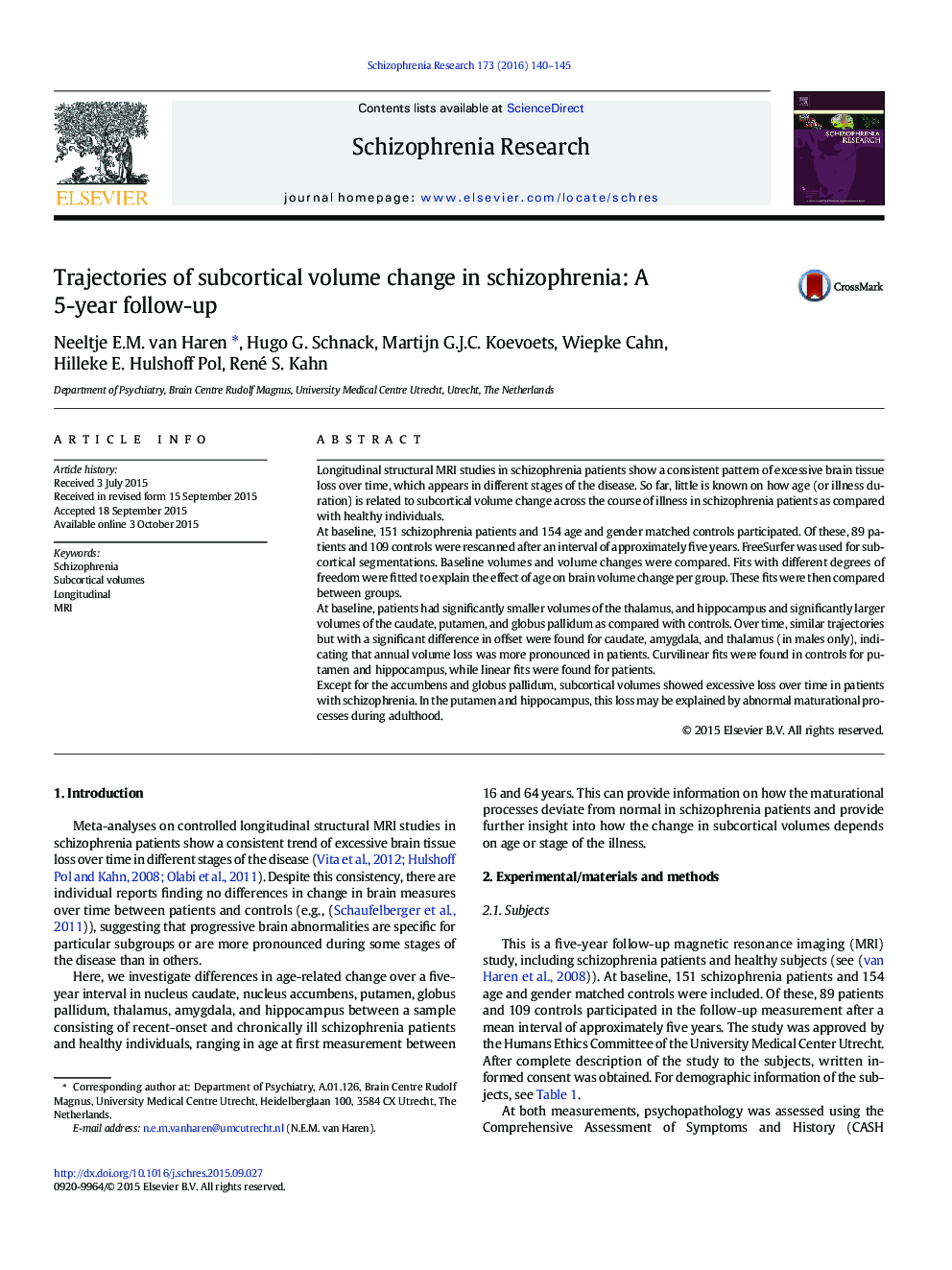| Article ID | Journal | Published Year | Pages | File Type |
|---|---|---|---|---|
| 338933 | Schizophrenia Research | 2016 | 6 Pages |
Longitudinal structural MRI studies in schizophrenia patients show a consistent pattern of excessive brain tissue loss over time, which appears in different stages of the disease. So far, little is known on how age (or illness duration) is related to subcortical volume change across the course of illness in schizophrenia patients as compared with healthy individuals.At baseline, 151 schizophrenia patients and 154 age and gender matched controls participated. Of these, 89 patients and 109 controls were rescanned after an interval of approximately five years. FreeSurfer was used for subcortical segmentations. Baseline volumes and volume changes were compared. Fits with different degrees of freedom were fitted to explain the effect of age on brain volume change per group. These fits were then compared between groups.At baseline, patients had significantly smaller volumes of the thalamus, and hippocampus and significantly larger volumes of the caudate, putamen, and globus pallidum as compared with controls. Over time, similar trajectories but with a significant difference in offset were found for caudate, amygdala, and thalamus (in males only), indicating that annual volume loss was more pronounced in patients. Curvilinear fits were found in controls for putamen and hippocampus, while linear fits were found for patients.Except for the accumbens and globus pallidum, subcortical volumes showed excessive loss over time in patients with schizophrenia. In the putamen and hippocampus, this loss may be explained by abnormal maturational processes during adulthood.
